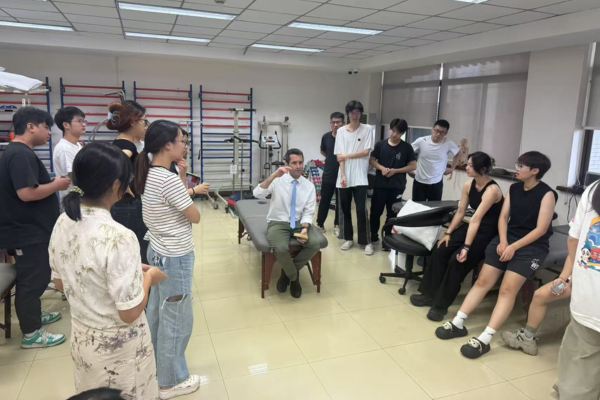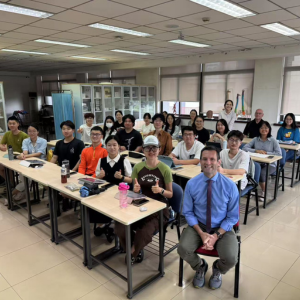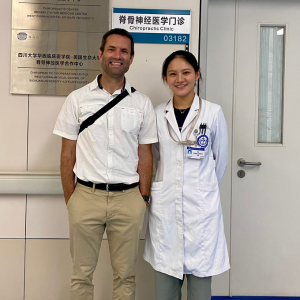
When Dr. Benjamin Holmes, DC, PhD, assistant professor of orthopaedic surgery at Duke University, traveled to China this summer, he brought more than just a suitcase—he carried with him the principles of Duke Spine Health and a passion for global collaboration in spinal care.
Dr. Holmes recently returned from a two-week teaching engagement at the West China School of Medicine, Sichuan University, where he led a spinal care course for 21 students. The experience was both educational and deeply enriching, offering a unique opportunity to share Duke’s approach to spine health while learning from a diverse array of international practices.

A Global Exchange of Knowledge
In addition to teaching, Dr. Holmes observed a wide range of spinal care methods across Chinese hospitals and clinics, including chiropractic, physical and occupational therapy, injection therapy, and traditional Chinese medicine (TCM) such as acupuncture and Tuina. He also demonstrated Duke’s evidence-based spinal care techniques, highlighting the role of primary spine care clinicians in the U.S.
The invitation to teach came after a chiropractor from West China Hospital, familiar with Dr. Holmes’ work at the Mayo Clinic, visited him to observe his practice. Impressed by his expertise, she recommended him to Sichuan University, which led to the formal invitation.
Professional Growth and Cultural Discovery
“Professionally, it was enlightening to compare and contrast spinal care approaches with clinicians trained in very different systems,” Dr. Holmes said. “I was especially struck by the overlap in manual care techniques across disciplines.”
The trip also laid the foundation for future collaborations in research, teaching, and clinical practice. Personally, Dr. Holmes was inspired by the beauty of Sichuan Province, the friendliness of its people, and the smooth integration of advanced technology—like robotic coffee makers at West China Hospital—into daily life.
Lessons That Transcend Borders
Dr. Holmes returned with several key takeaways:
- Back and neck pain are universal challenges that transcend language, culture, and politics.
- Manual therapies across disciplines are increasingly converging in technique and philosophy.
- The integration of traditional and modern medicine in China offers a compelling model for holistic, patient-centered care.

He was particularly impressed by how Chinese hospitals implement the World Health Organization’s strategy to integrate traditional, complementary, and integrative medicine (TCIM) into health systems. “Patients often receive care from both medical and traditional providers—sometimes in adjacent rooms, on the same day,” he noted.
Inspiring the Next Generation
Dr. Holmes’ course included both lectures and hands-on labs, allowing him to connect with students on multiple levels. “They were intelligent, driven, curious, and kind,” he said. “I have no doubt they’ll become exceptional clinicians.”
His Chinese colleagues were equally inspiring—thoughtful, collaborative, and eager to exchange ideas. “It was a true partnership in learning,” he added.
Dr. Holmes’ experience is a reminder that while healthcare systems may differ, the commitment to healing and learning is universal. Through global engagement, Duke Orthopaedics continues to lead not only in innovation but in building bridges that elevate care worldwide.